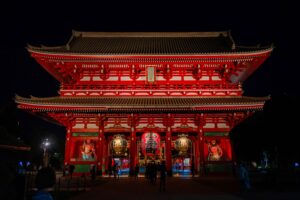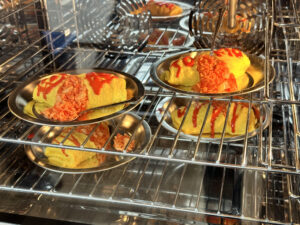How Popular are Food Samples Abroad?
Food samples in Japan are so precisely made that it’s hard to tell them apart from the actual food.
They are often seen displayed in restaurants in Japan, but how well known are they in other countries?
In this article, we explore the popularity of food samples overseas!
Contents
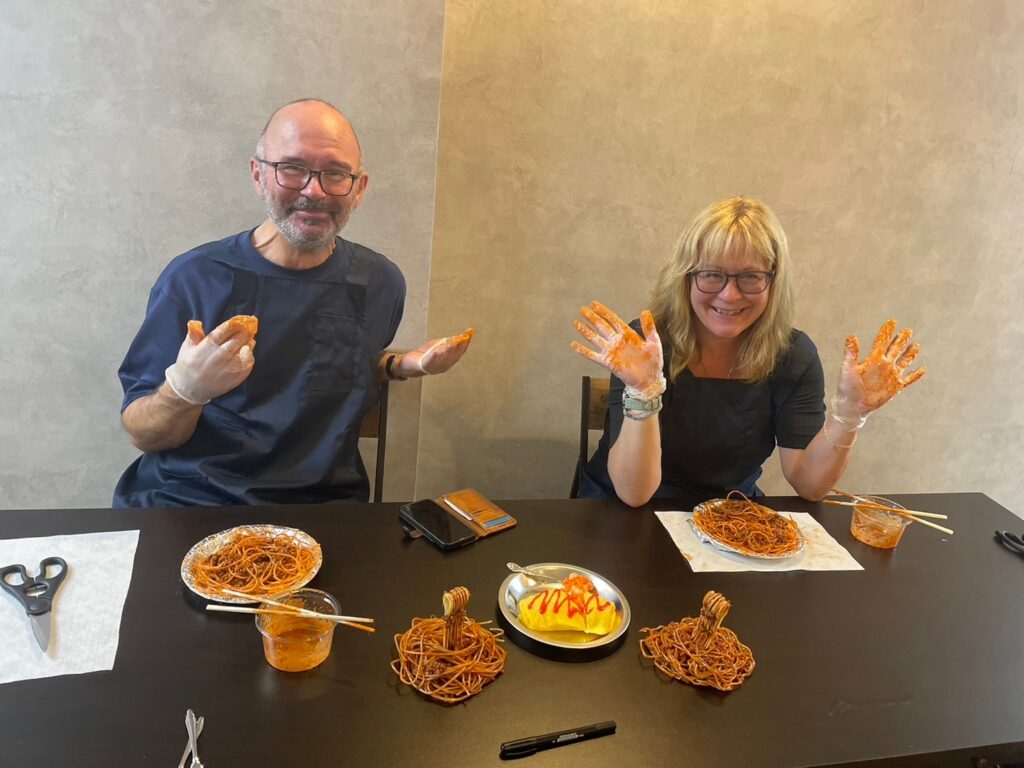
1. Food Samples as Japanese Culture
Food samples have continued to develop as a uniquely Japanese culture.
While they can be found everywhere in Japan, they appear much less abroad.
In recent years, the increase in the number of foreign tourists has increased the demand for food samples within Japan.
This is because even if they cannot read Japanese, they can guess what kind of food it is and can order it by pointing at the product.
This is a type of “universal design”, a design for all.
Todd Harris, a reporter who came to Tokyo to cover the Tokyo Olympics praised the food samples on his social media platform.
“The Japanese have perfected the art of plastic food for display! It makes ordering so easy! Just point! 🇯🇵” (right image)
Food samples have evolved technically over the years and have reached the level of an art form.
This is a uniquely Japanese culture.
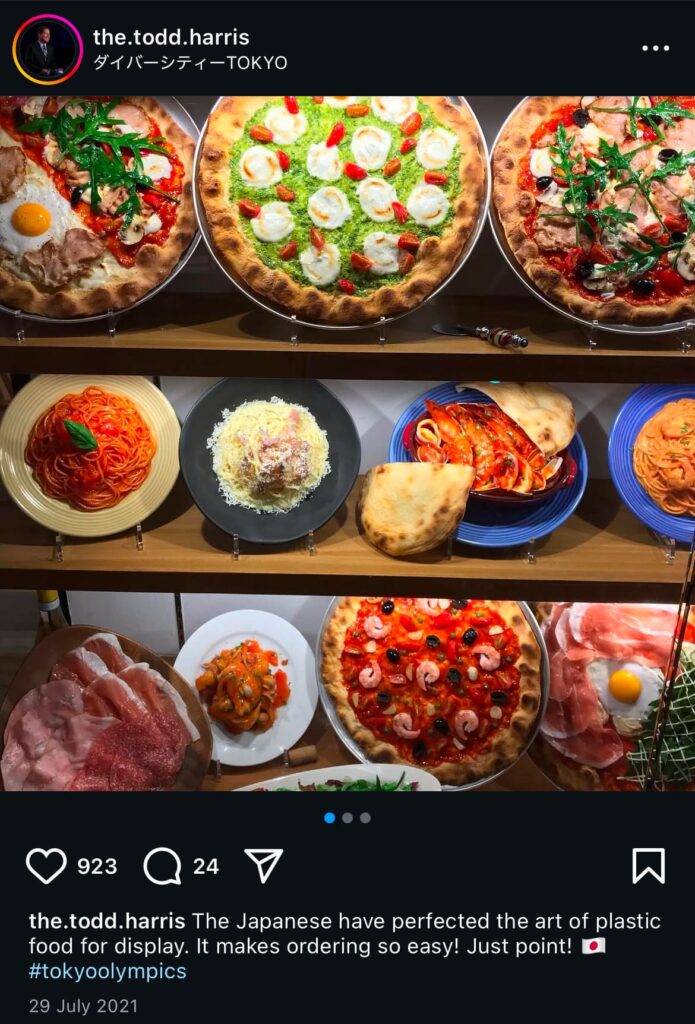
2. History of Food Samples
Food samples were created more than 100 years ago, around the time of the Taisho era (1912-1926) to the beginning of the Showa era (1926-1989).
At that time, food samples were called “food models” or “cooking models”.
It is said that the first time that food samples were introduced to the public was at the temporary store of the department store Shiroki-ya Nihonbashi.
The system of ordering food by looking at the food samples and purchasing the corresponding meal ticket made ordering much more efficient.
As a result, this increased the turnover rate, thus increasing sales.
For more information on the history of food samples, have a look at our article Why Did Food Samples Become Popular in Japan?
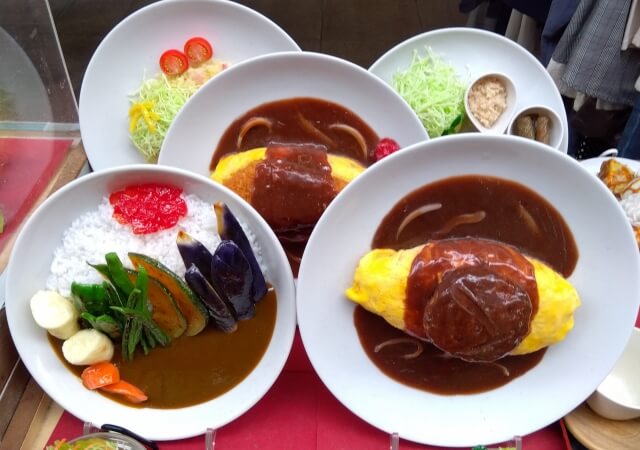
3. How to Make Food Samples
The way food samples are made depends on the food you are sampling.
In the past, food samples were generally made out of wax, but nowadays they are usually made out of resin.
This is because wax tended to melt when exposed to sunlight, so it was difficult to retain its original shape.
As a better substitute, resin was used since it was more durable.
Food samples may be baked in an oven, or molded underwater, making its production methods highly varied.
Why not try your hand at making your own food samples at the Food Sample Making Cafe?
For more information on how food samples are made, have a look at our article How to Make Food Samples
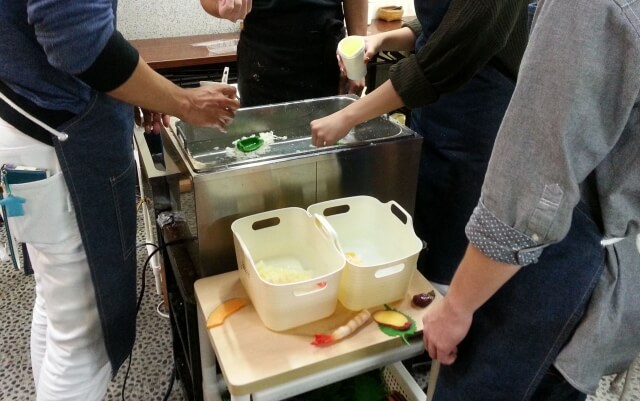
4. Popularity of Food Samples Outside of Japan
How well known are food samples abroad?
Well, many are impressed by the precision of the craftsmanship of food samples.
Nowadays, more and more people are visiting Japan and putting food sample making as a part of their itinerary.
Not only can you take these food samples home, you can also brag about how you’ve handmade them.
In Malaysia, you can find food samples placed outside restaurants, just like restaurants in Japan.
They imitate the actual food, enough to get us salivating.
In some places, large food sample objects are placed in front of the restaurant.
Bold designs, which are not so often found in Japan, can be both bizarre and unique.
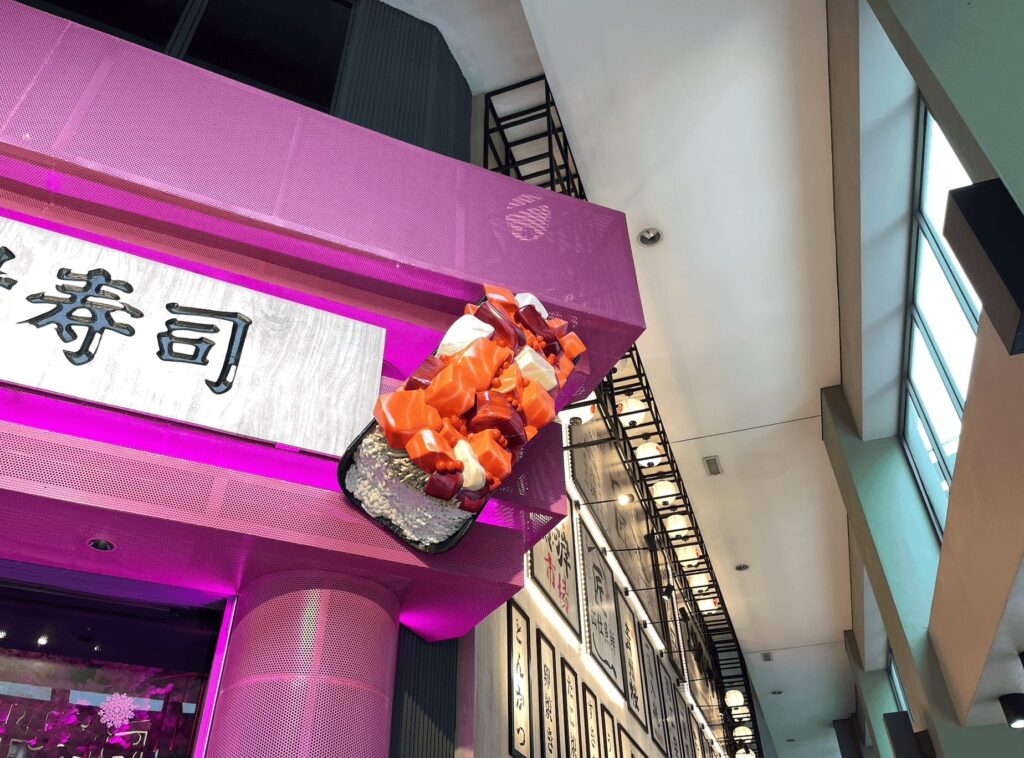
5. Food Sample Exhibition in London
In JAPAN HOUSE LONDON, there was an authentic exhibition of food samples, first to ever be held overseas.
“Looks Delicious! Exploring Japan’s Food Replica Culture” was the catchphrase for this exhibition with the intention of exploring the world of food samples that you can “taste” with your eyes.
JAPAN HOUSE LONDON is one of the external communications bases established by the Ministry of Foreign Affairs of Japan to promote Japan’s diverse attractions, policies and initiatives to a wide range of people.
As this food sample exhibition is a center for the dissemination of Japanese culture, the centerpiece of the exhibit includes food samples of local cuisines from each of the 47 prefectures of Japan.
The event has been covered by both the local media and Japanese media, and has attracted attention from all over the world.
And not to mention, the admission is free of charge!
The event will be held from October 2024 to February 2025, and we hope that many people will be able to experience the wonder of food samples.
Japan House London Official Website
6. Food Sample Accessories
Food samples are not only displayed in restaurants and eateries, but are also incorporated into everyday items such as smartphone cases and USB memory sticks.
Some places specialise in accessories and miscellaneous goods with a hint of food motifs.
There are earrings, necklaces, belts, tie pins, and even clothes hangers.
Just looking at them makes you hungry.
Food samples of familiar items makes it more appealing to a wide range of people.
Exhibitions like the one in London, and food sample making cafes like ours (wink) are making food samples popular among foreign visitors, by the day.
Ganso Shokuhin Sampuru-ya Website
7. Summary
So, you’ve found out that food samples have had a major role in the food industry.
This has no doubt attracted foreigners and now it has gotten so popular that food sample making experience has been established as a sightseeing itinerary.
We await you at the Food Sample Making Cafe!
What are we?
We run Food Sample Making Cafe at Asakusa, Tokyo in Japan.
Here you can immerse yourself in Japanese culture through experiencing food sample making.
We will carefully teach you how to make authentic, professional-grade food samples, so everyone from adults to children can enjoy it!
Your food sample will be completed in about an hour, and you can take it home right away.
The cafe is an indoor interactive zone, so it is recommended for sightseeing on rainy or hot/cold days.
If you want to try making food samples of your own, why not join us?
Reservations can be made here.
Unauthorized copying and replication of the contents of this site, text and images are strictly prohibited.

